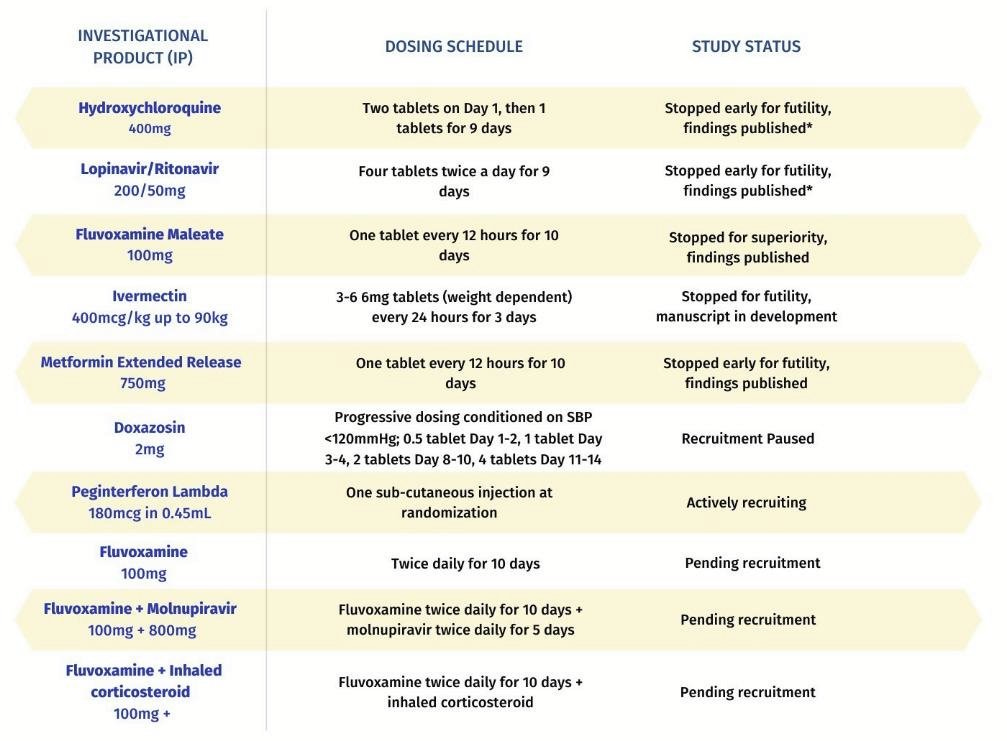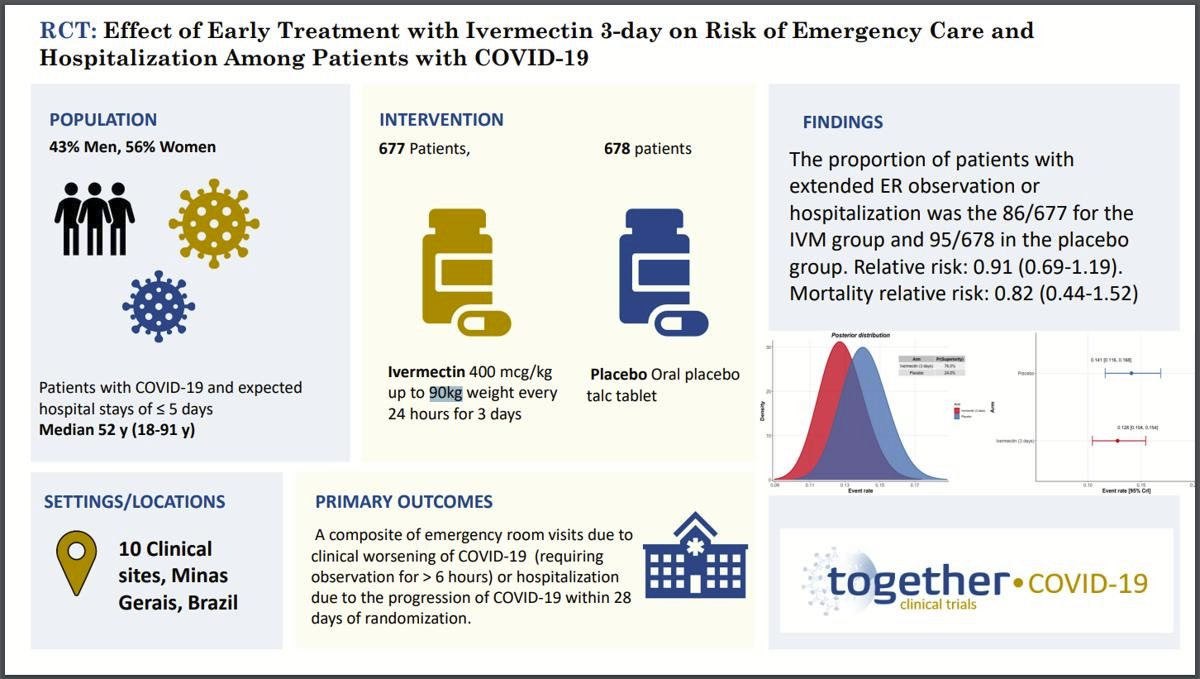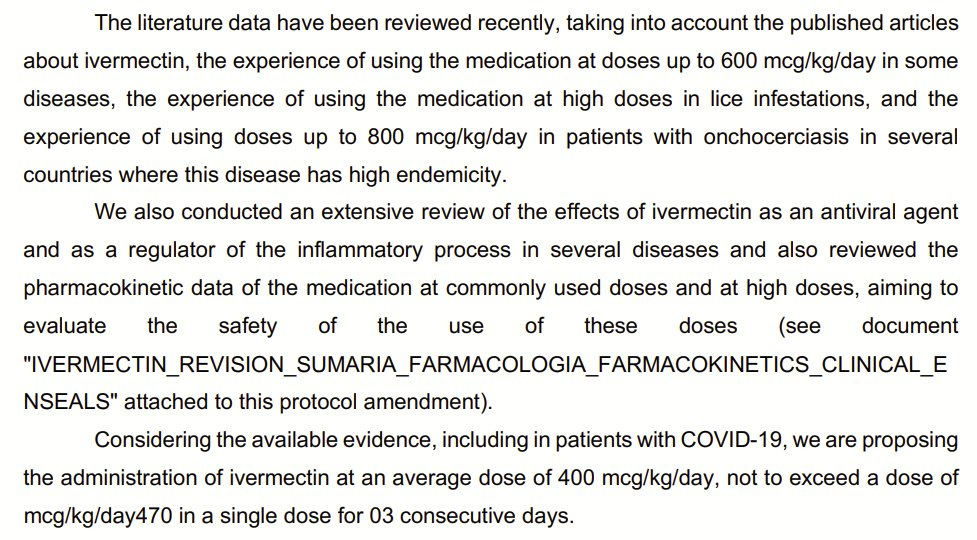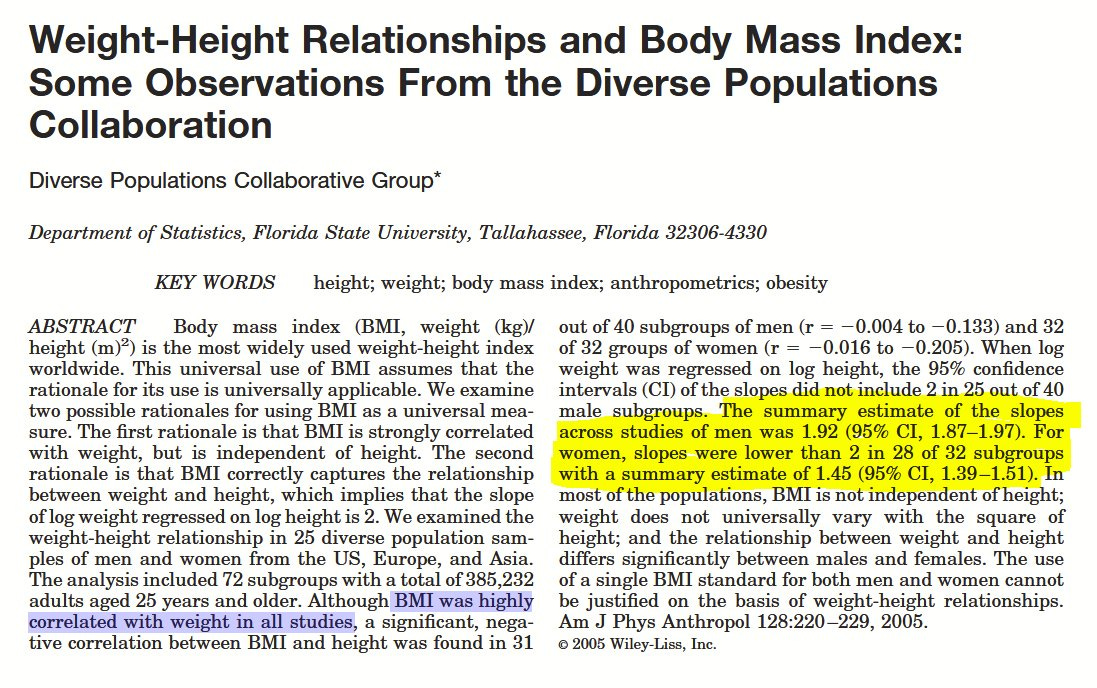TOGETHER Trial Seriously Underdosed Its Ivermectin High-BMI Patients
And how you can help me.
This article is part of a series on the TOGETHER trial. More articles from this series here.
The underdosing issue in the TOGETHER trial is a lot more serious than I realized. In this article, I’ll describe my current understanding:
[Statisticians, amateur and pro, I need your help. Further down on this article you’ll see the key questions I want to answer. Reply here or send me a DM on Twitter if you have ideas.]
So, to start off, the TOGETHER study on ivermectin had a population that was fairly evenly split between patients with body-mass index (BMI) < 30, and patients with BMI >= 30.
Dosing Doublespeak
In the paper, the dosing is described as 3 x 400μg/kg.
However, in the protocol that is attached to the publication, they make it clear that the dosing does not scale for weights greater than 90kg. So, someone who weighs 180kg will get something like 3 x 200μg/kg
To make sure I'm not missing something, I looked more widely. Indeed in many places, the limitation is spelled out clearly: "up to 90 kg.” Here are a few examples:
First, the protocol posted in gatesopenresearch.org:
Second, the trial’s own website:
Third, and most definitively, in the presentation made to present the result of the trial on the day the ivermectin arm was stopped:
From the released results, we can see that all the benefit of the treatment was concentrated in the <30 BMI group, which is the group that was dosed according to the description in the paper.
I looked in the protocol attached with the published paper for a justification for this weight limit, and, to my surprise, not only isn't there a justification for such a limit, but the recommendation is to dose at 3 * 400μg/kg, with no caveats. They violated their own reasoning:
In fact, as recently as last month, the authors described their rationale with no reference to the weight limit. See slides 16-20 in the presentation given to showcase the results of the study to the world.
It should be noted that ivermectin is dosed according to body weight for its approved uses, too. I've found no evidence of ivermectin dosing for any condition that scales up to a certain weight limit and not further. This limitation seems completely novel to this trial.
BMI & Underdosing
Even our friends at the CDC have no qualms about the fact that BMI is a serious risk factor for COVID. Risk of death doubles for patients with the highest BMI:
But wait—is BMI correlated with weight? Highly:
What's more, the average adult male height in Brazil, according to Our World In Data (as of 1996), is 173.55cm.
A 30 BMI person with that height has a weight that is just over 90kg.
I realize this is a napkin sketch, but it's pretty clear that something like half the men in the trial were underdosed—some severely so—and a significant proportion of women, too. What's worse, the higher the risk due to BMI, the lower the dose they were given.
This might be understandable were it communicated clearly in the paper, and a rationale was given, but it seems that instead, the dosing is misrepresented in the paper. What's more, the authors have done some deflecting in advance, as if this is a counter-argument of any sort:
Open Questions
Based on the above analysis, there are two questions I would like to try and answer:
With reasonable assumptions, can we estimate what the average dose that was actually administered was?
Combining with risk statistics, can we estimate the penalty on the ivermectin results that this weight limit imposed?
I look forward to your ideas on how to estimate the above, either responding to this article, or in a Twitter DM. If some of you have good ideas for approaching the problem and time to devote to it, I'm also more than willing to pay for the work needed. DM me!
Thank you in advance, DYOR Hive Mind!
This article is part of a series on the TOGETHER trial. More articles from this series here.















I’m a housewife and a dog rescuer but even I know to dose dogs according to weight! I would not expect mange mites to die or intestinal worms to die if I gave a reduced dose.
I think what your trying to achieve is an estimate of the number of patients who received less than 400mcg/kg.
I don’t think it is worth pursuing this unless you have the raw data. It is too speculative, could easily be out by 5 patients either way and irrespective, the authors will not respond nor change their paper based on this speculation.
However, all hope is not lost. If a patient is 100kg or greater then they would have received 360mcg/kg or less.
Even without knowing the exact weights of the patients, it is almost certain that at least 1 patient was greater than 100kg (although likely many more). I chose 100kg because this represents a 10% reduction in the stated dose that was supposedly being assessed for effect. As I mentioned previously, you could pick any number under 400mcg/kg but a 10% reduction becomes clearly significant
The mere fact that even a single underdosed patient was included in the study results without mention anywhere in the paper renders the study invalid and requires at the very least a retraction and rewrite.
With raw data you can then start to exclude underdosed patients and reassess the results.
I think the time is right to escalate and insist the NEJM retract the paper and/or grant access to raw data.
Lastly, I know you’re doing it but keep a close eye on the original paper, there is every chance that they’ll change the manuscript again in regards to the dosing regime and its potential failings